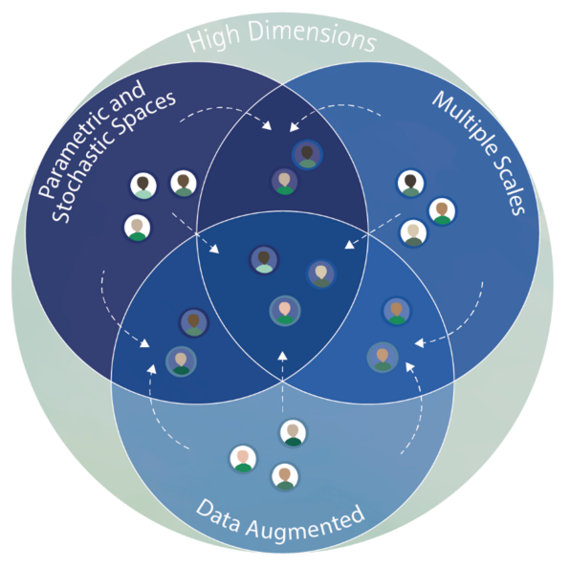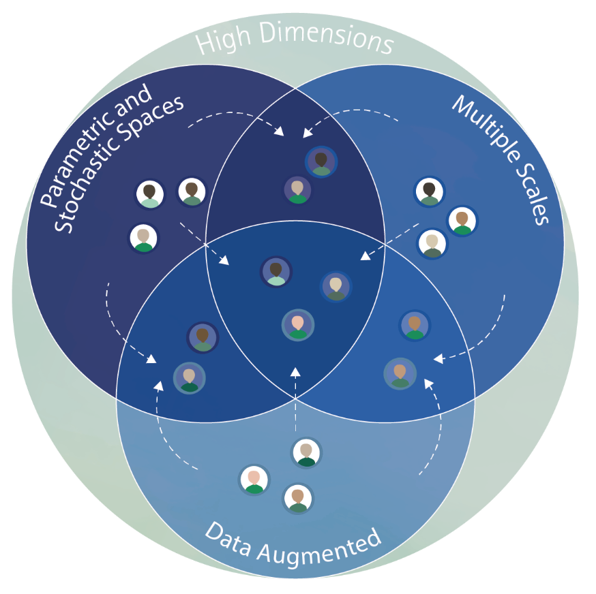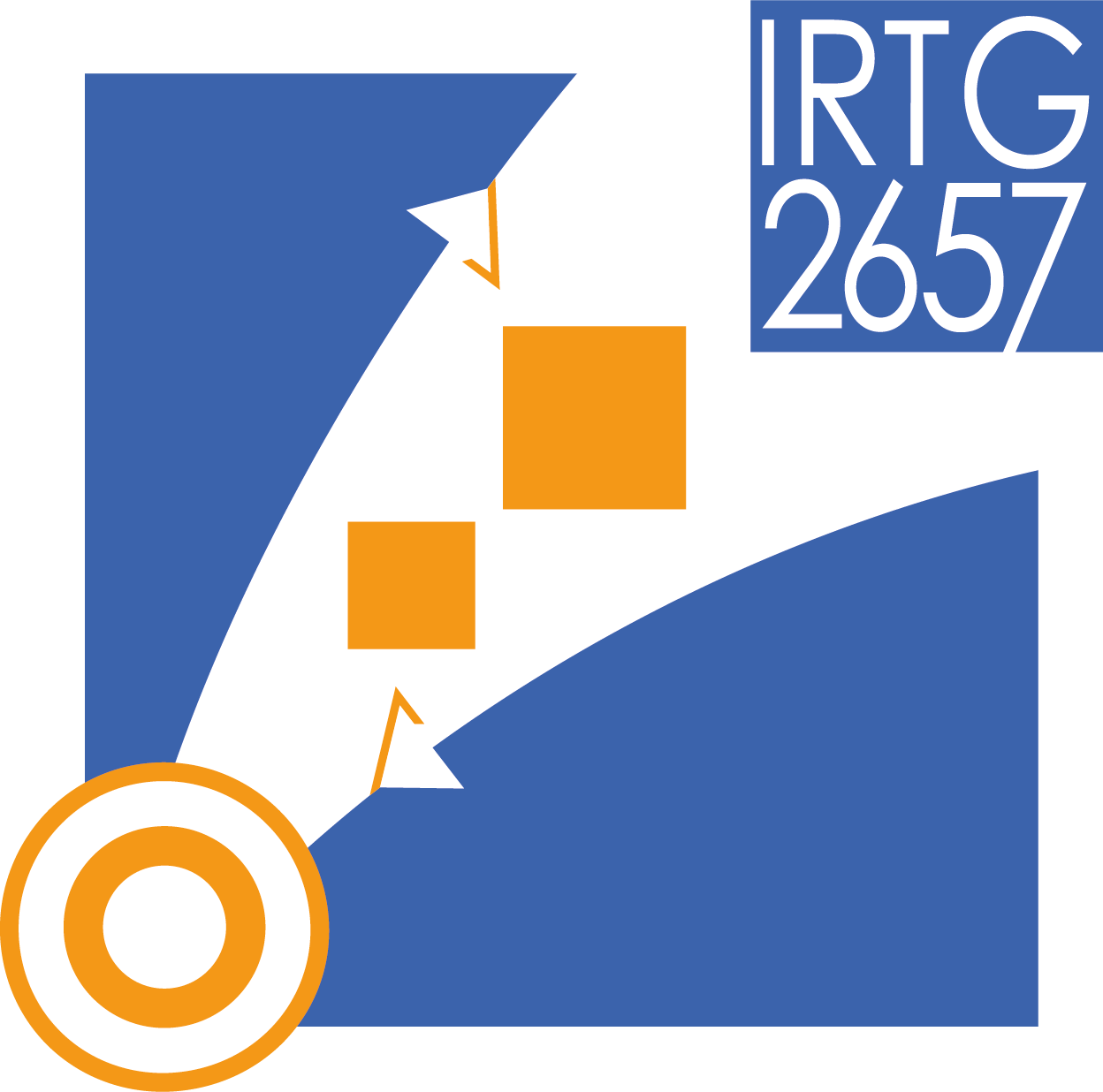The core research idea within the IRTG 2657 is the investigation and establishment of efficient and error-controlled model order reduction (MOR) techniques and further measures for the acceleration of computations for typical high-dimensional problems in computational mechanics, characterised by:
- Nonlinearity and/or multi-physics interactions
- High dimensionality in physical or parametric spaces
- Availability of additional data (e.g., measurements) to be incorporated
To enable a targeted collaborative framework, the research is organised within the following three core areas:
-
A. Parametric and Stochastic Spaces (PSS)
Large dimensions (d > 10) appear routinely in stochastic computations or parametric problems. In applications, such as reliability analysis or structural optimisation, a nonlinear system of partial differential equations must be solved multiple times (multi-query problems). Tackling this task efficiently with standard mesh-based techniques on modern hardware architectures is not feasible. MOR provides a promising pathway, but it is not clear to date what method works best for the complex problem formulations that typically occur in computational mechanics. The goal of this IRTG is to apply and, if necessary, adjust modern MOR techniques to specific prototypical mechanics problems that involve nonlinearity, multiple coupled solution fields and multiple physics.
-
B. Multiscale Problems in Space and Time (MST)
Multiscale problems in space are well discussed for the modelling of materials behaviour with underlying microstructures, e.g., with applications to damage mechanics. Similar problems occur in contact mechanics, where the interaction of contact between microscopic asperities dominates the macroscopic behaviour. Today, computational costly investigations based on discretising separated scales are performed. A similar issue arises for different scales in time, e.g. for cyclic fatigue simulations under random loading conditions. The goal of this IRTG is to apply and, if necessary, adjust modern MOR techniques to drastically speed up multiscale simulations.
-
C. Data Augmented Simulations (DAS)
In the third focus area, complementary experimental data will be utilised which we group under the term data augmented simulation (DAS). Novel experimental techniques that resolve, for example the microstructures of materials, produce a massive amount of data. This data can be directly incorporated into the MOR strategy, e.g. to enhance or even replace constitutive equations. Furthermore, observational data, e.g., spatially distributed measurements or sensor data, can be used to enhance MOR techniques, in particular with respect to tackling challenges such as nonlinearities or high dimensions.
The three core areas constitute the thematic framework of the IRTG that will provide a broad platform for research on modern MOR strategies applied to challenging mechanics problems. Doctoral projects are defined in collaboration of at least one Principal Investigator (PI) from the French side and one PI from the German side. An important aspect shaping the overall spirit of the IRTG is the exchange of experience among all participants and teams, as illustrated in Figure 1.











